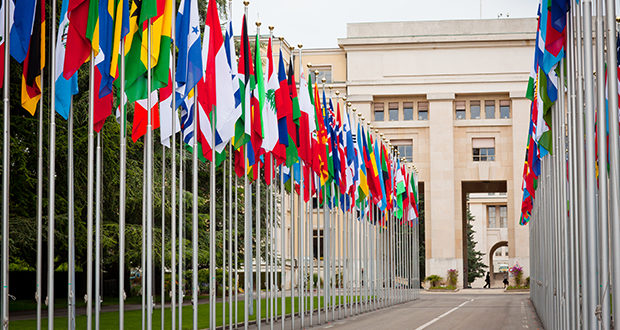Now officially in its second year, following a pilot, the Times Higher Education (THE) Impact Rankings is garnering more attention among institutions than before. This year, 1115 institutions are globally ranked, compared to 768 last year.
The Impact Rankings measure universities' commitment to the United Nations Sustainable Development Goals (SDGs). There are 17 of these goals ranging from addressing climate change, natural resource management, energy, sustainable cities and communities, gender inequality, innovation and infrastructure to peace, justice and strong institutions.
To be ranked overall, institutions must submit information on the mandatory SDG 17 Partnership for the goals, and at least three other SDGs, provided various thresholds are met. Institutions are also ranked on their contribution to individual SDGs, and in some cases they may choose not to submit for the overall ranking, but instead focus on individual SDGs.
The THE Impact Ranking considers research, stewardship, outreach and teaching metrics and is based on both quantitative and qualitative data, including evidence about partnerships that institutions enter into at home and abroad, community engagement and facilitation and policy advice to governments. Thus, the Impact rankings are very much about the multiple missions that modern higher education institutions undertake. The Impact rankings extend well beyond the mainstream rankings, which have a strong focus on traditional metrics of publications, citations, research income and student and staff numbers.
Of the overall globally ranked 1115 institutions in the Impact Rankings 2021, the leaders in number of ranked institutions are Russian Federation (75), Japan (73), UK (50), India (49), US (45), Brazil (38) and Taiwan (35). This pattern is different from the usual rankings in which the US and Europe dominate, and is a reflection of the fact that a number of the “usual suspects” ie traditional, sandstone institutions around the world do not participate in the THE Impact Rankings.
While there is growth overall in the number of institutions ranked this year, the standout countries for increases are Russia and India. The number of globally ranked institutions from India has almost doubled from 26 to 49. This is instructive given that many of the SDGs bear directly on the core challenges that India faces in poverty, gender equity, urbanisation and climate change. Of interest also is the relative lack of Chinese institutions in these rankings, 13 this year and nine last year. On the contrary, the number of ranked Chinese institutions in the traditional or mainstream rankings is much higher and has been growing rapidly in recent years, reflecting strong investment in capability building in its higher education sector. Chinese institutions, it would appear, are focussing on the mainstream rankings.
Australia’s performance
Australia performs very well with 24 ranked institutions, up from 21 last year. As a proportion of its total institutions this is a very good result. Beyond this is the quality of Australia’s performance. Four Australian Institutions are ranked in the top 10 (University of Sydney, RMIT, La Trobe and University of Wollongong) and 10 are in the top 50, reflecting the overall strength and commitment to SDGs.
When looking at individual SDG rankings for Australia (regardless of whether the institution is ranked overall), the following standout performance is observed:
- 26 ranked institutions in SDG 3 Good Health and Well-Being
- 24 ranked institutions for SDG 17 Partnership for the Goals
- 21 ranked institutions in SDG 10 Reduced Inequalities
- 19 Institutions in both SDG 4 and SDG 5, Quality Education and Gender Equality respectively
- 18 ranked Institutions in SDG 11 Sustainable Cities and Communities
Australian institutions are generally ranked well across the breadth of SDGs, reflecting the multifaceted nature of research, engagement and policy capability in Australian institutions. Given the strength of research and other capabilities in medical and related areas, it is unsurprising that Good Health and Well-Being stands out. In a number of SDGs Australian Institutions are world’s best.
Although still important the less well ranked areas for Australian institutions, undoubtedly reflecting the choice of SDGs to submit for, are: SDG 12 Responsible Consumption and Production with 8 institutions; SDG 6 Clean Water and Sanitation and SDG 14 Life Below Water, both with 12 institutions; and SDG 13 Climate Action with 11. Arguably, these perhaps do not represent either areas of greatest capability or need for Australian institutions relative to other SDGs, or that the issues do not have as great a national profile and funding, or judgements are made by institutions that others around the world are ahead.
Overall, the Times Higher Education Impact Rankings is gaining traction amongst institutions, as these rankings reflect real world issues and challenges facing economy, society and environment. It is expected that this will continue into the future.
Dr Anand Kulkarni is a higher education professional at Victoria University. This article represents the author’s views entirely.
Do you have an idea for a story?Email [email protected]
 Campus Review The latest in higher education news
Campus Review The latest in higher education news

